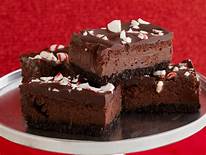Importance of well balance diet
All food contains all of the nutrients we need to be healthy, it is necessary to eat various foods in sufficient amounts. A good diet will include many different foods, and sufficient in quantity and quality to meet an individual’s need for food energy and other micro nutrients.
BEANS AND LEGUMES
Typical serving size:
½ cup fresh, dried or canned (26 oz or 75 g)
HOW THEY HARM
Allergies
WHAT THEY HEAL
The 13,000 varieties of legumes that are grown worldwide all produce seed-bearing pods and have nodules on their roots
Otherwise, the members of this plant family differ greatly: Some are low- growing plants (bush beans, lentils, and soybeans) or vines (many peas and beans); others are trees (carob) or shrubs (mesquite)
Although peanuts are often classified as nuts, they are actually legumes
All beans are a subset of legumes (also called pulses)
Beans come in two main varieties: pod or shelled
Pod beans, such as green beans, French beans, pole, and snap beans, are served fresh or canned in their pod
Shelled beans such as chickpeas, lentils, and kidney, black, navy, and pinto beans are usually sold dried or canned
QUICK TIP:
Drink and exercise As you include more beans in to your meals, be sure to drink enough fluids and exercise regularlyOtherwise, your gastrointestinal system may not be able to handle the increased dietary fiber
Beans and legumes are nutritional powerhouses, high in protein, fiber, B vitamins, iron, potassium, and other minerals, while low in fat
Health Benefits
Prevents heart diseaseLegumes contain a range of important disease-fighting phytochemicals, including isoflavones, which are protective against heart disease
Additionally, beans and legumes provide large amounts of fiber, including the soluble type that is important in controlling blood cholesterol levels
Studies have shown that people who eat more legumes have a lower risk of heart disease
Lowers cholesterol
Studies find that about 10 g of soluble fiber a day—the amount of ½ cup to 1½ cups of navy beans—reduces LDL cholesterol by about 10%
Legumes and beans contain saponins, which help lower cholesterol, and phytosterols, which have anticancer and cholesterol- lowering properties
Fights cancer
Beans contain a wide range of plant chemicals, including isoflavones and phytosterols, which are associated with reduced cancer risk
Helps manage diabetes
Legumes and beans are also good for diabetes because their balance of complex carbohydrates and protein provides a slow, steady source of glucose instead of the sudden surge that can occur after eating simple carbohydrates
Aids weight loss
If you are trying to lose weight, a serving of legumes will help you to feel full more quickly
The rich fiber content fills your stomach and causes a slower rise in blood sugar, staving off hunger for longer and giving you a steady supply of energy
Health Risks
Absorption of vitaminsSoybeans, for example, contain substances that interfere with the absorption of beta-carotene and vitamins B12 and D
Heating and cooking inactivates most of these substances, but to compensate for vitamin loss, balance legume consumption with ample fresh fruits and yellow or dark green vegetables (for beta-carotene), lean meat or other animal products (for vitamin B12), and cooked greens, wheat germ, fortified cereals, seeds, nuts, and poultry (for vitamin E)
Old School Legumes must be eaten at the same time as grains to get a “complete” protein
New Wisdom Have a mix of amino acids throughout the day and this won't be necessary
In susceptible people, purines increase levels of uric acid and can precipitate a gout attack
22% lower risk of obesity is associated with eating beans
Favism
Some people of Mediterranean or Asian descent carry a gene that makes them susceptible to favism, a severe type of anemia contracted from eating fava beans
Anyone with a family history of this disease should avoid these beans
Allergies
Some legumes, especially peanuts, trigger an allergic reaction or migraine headaches in susceptible people
In such cases, the offending foods should be eliminated from the diet
Gas
Dried beans, lentils, and peas are notorious for causing intestinal gas and flatulence
While not really a health risk, this can certainly be uncomfortable or embarassing! The method of preparation can help reduce gas production
Change the water several times during the soaking and cooking process
Always rinse canned beans and chickpeas; combining cooked legumes with an acidic food may reduce gas production
Some herbs, especially lemon balm, fennel, and caraway, can help to prevent flatulence
WARNING FOOD-DRUG INTERACTION
If you take a monoamine oxidase (MAO) inhibitor to treat depression, you should avoid fava beans; the combination can raise blood pressureAllergies
Buying Tips
If you can see the fresh bean shapes within the pod, they’re overgrown and likely tougher
Avoid fresh beans with mushy tips or with white mold
This indicates age
BEAN COUNTING
When planning meals with beans, here’s how to judge the amount of beans you’ll need:Storing Tips
Leave the ends of fresh beans on until you’re ready to cook
Fresh beans can be stored in a refrigerator for up to 5 days
If dried beans are hermetically sealed, they can be stored for up to 10 years
Also pick out any foreign matter
Rinse well




